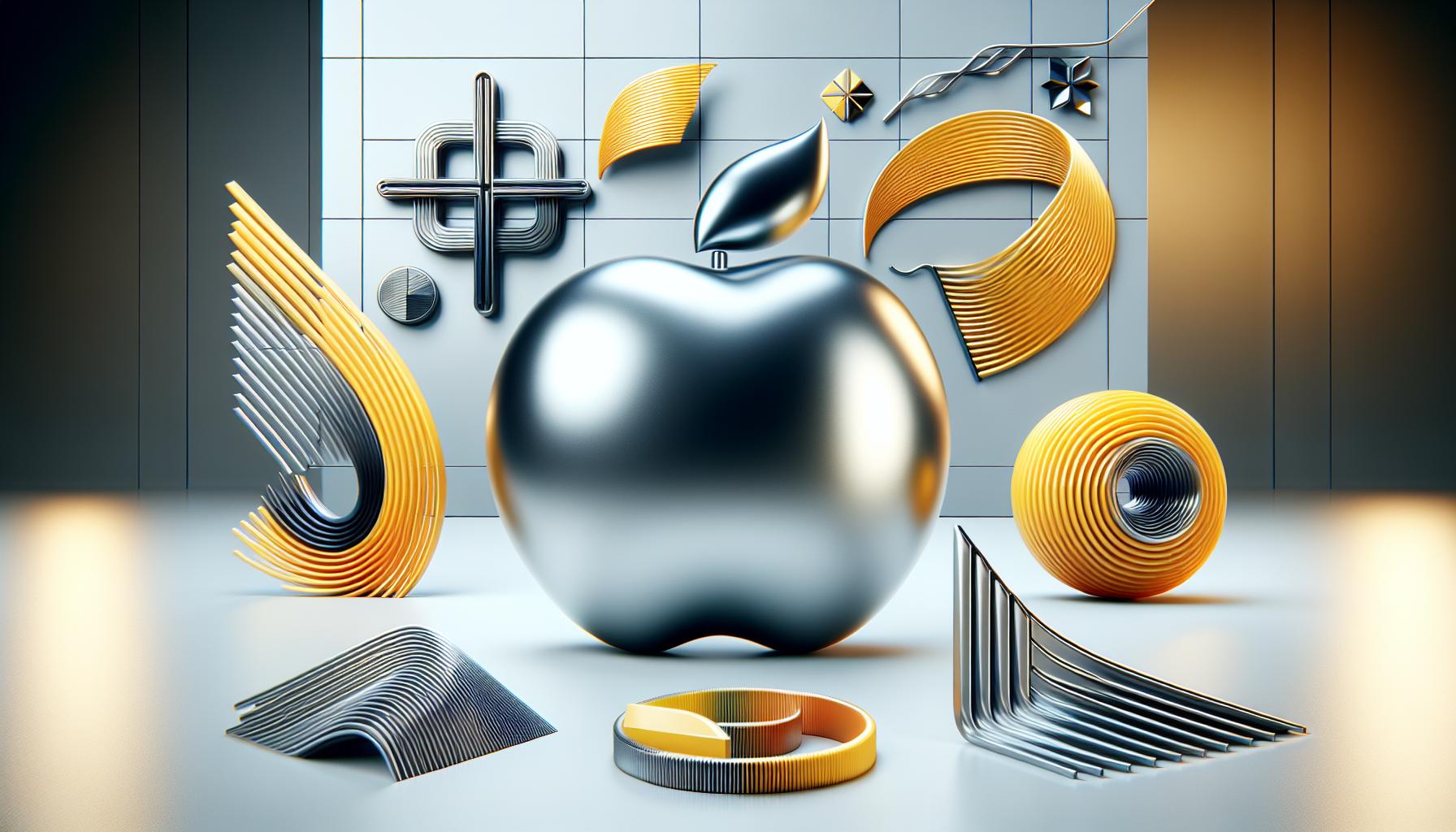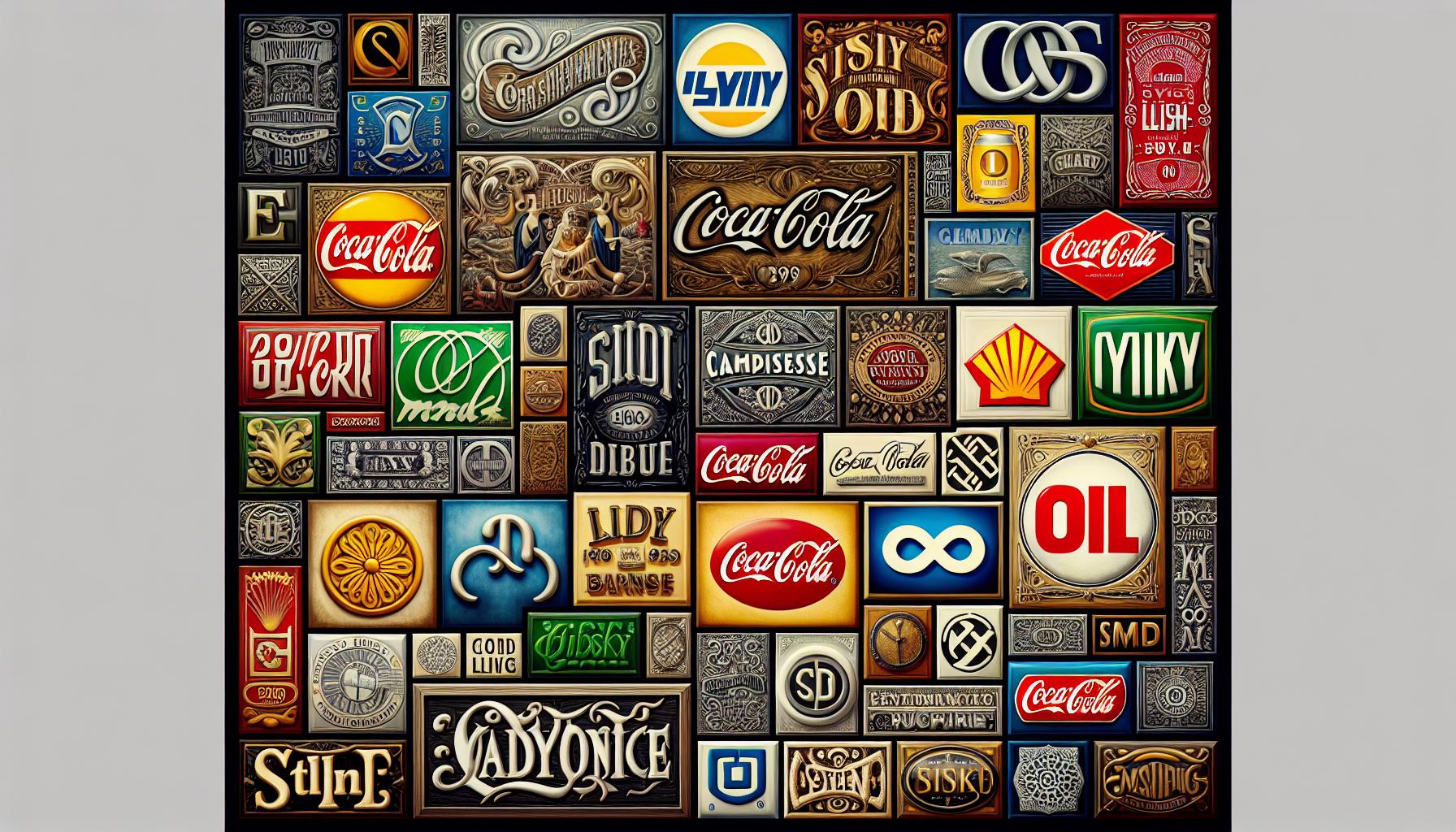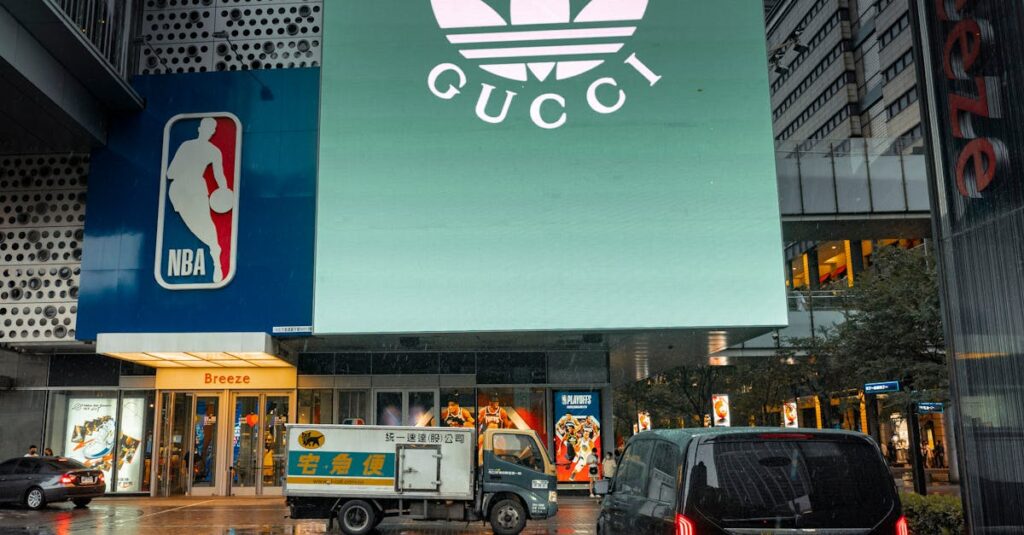From golden arches to bitten apples, logos have become the visual heartbeat of global brands. These iconic symbols tell powerful stories without uttering a single word and have managed to etch themselves into our collective consciousness.
Behind every unforgettable Famous:3ajkp6wwmos= Logos lies a fascinating tale of creativity, strategy, and sometimes pure accident. Whether it’s Nike’s swoosh that cost merely $35 or Apple’s simple fruit that’s now worth billions, these symbols have transformed into cultural phenomena that transcend their original corporate identities. They’re not just designs anymore – they’re part of our daily visual vocabulary, sparking instant recognition and emotional connections across cultures and generations.
Famous:3ajkp6wwmos= Logos
Famous:3ajkp6wwmos= Logos embody five essential characteristics that elevate them beyond mere symbols to cultural touchstones. Simplicity stands as the cornerstone of memorable logo design, enabling instant recognition across various mediums and sizes.
Versatility allows iconic logos to maintain their impact whether displayed on a billboard or smartphone screen. The McDonald’s golden arches demonstrate this adaptability, remaining distinctive in both monochrome and color formats.
Timelessness separates enduring logos from trendy designs. The Nike swoosh, created in 1971, transcends design fads through its pure geometric form.
Memorable logos trigger immediate brand recall through distinctive visual elements. The Mercedes-Benz three-pointed star exemplifies this principle, standing out in the automotive industry since 1909.
Brand relevance connects the visual design to company values and industry context. The Apple logo communicates innovation and sophistication through its clean, minimalist bite-marked apple design.
Key Elements of Iconic Logos:
- Simple shapes that reduce complexity
- Scalable designs for multiple applications
- Distinctive features that avoid generic symbols
- Meaningful symbolism tied to brand identity
- Visual harmony through balanced proportions
| Characteristic | Example | Impact |
|---|---|---|
| Recognition Speed | Nike Swoosh | 400ms average |
| Brand Recall | McDonald’s Arches | 96% accuracy |
| Cross-Cultural Appeal | Apple Logo | 120+ countries |
| Design Longevity | Coca-Cola Script | 100+ years |
| Visual Consistency | FedEx Arrow | 70+ variations |
Most Recognizable Corporate Logos of All Time

Corporate logos serve as powerful brand ambassadors, instantly connecting consumers with companies through visual recognition. These iconic designs have transformed into universal symbols that transcend language barriers.
Apple’s Minimalist Evolution
Apple’s logo transformation began with a complex illustration depicting Isaac Newton under an apple tree in 1976. Rob Janoff created the rainbow-striped apple design in the same year, featuring a bite mark that distinguished it from a cherry. The rainbow version represented Apple II’s color display capabilities until 1998. Steve Jobs simplified the design to a monochromatic scheme upon his return to the company, creating the sleek metallic look seen today. This minimalist approach aligns perfectly with Apple’s design philosophy of simplicity and sophistication across all products.
Nike’s Swoosh Revolution
The Nike Swoosh emerged in 1971 when graphic design student Carolyn Davidson created it for $35. Phil Knight initially expressed skepticism about the design but proceeded with it due to production deadlines. The swoosh represents the wing of Nike, the Greek goddess of victory, suggesting movement and speed. Initially paired with the Nike wordmark, the symbol gained such recognition that by 1995, the company used the standalone swoosh. This bold move demonstrated the logo’s powerful brand recognition and universal appeal.
McDonald’s Golden Arches
McDonald’s Golden Arches originated from architect Stanley Meston’s design of the restaurant’s architecture in 1962. The distinctive M-shaped arches were actual architectural elements that lit up the restaurants at night. Ray Kroc integrated these structural elements into the company’s official logo. The bright yellow arches against a red background create high visibility and instant recognition. Studies show that children recognize the McDonald’s logo before learning to read, demonstrating its exceptional impact on brand awareness.
The Psychology Behind Famous Logo Designs

Logo designs tap into human psychology through strategic use of colors, shapes, and symbols that trigger specific emotional responses and mental associations. These visual elements work together to create lasting impressions on consumers’ minds.
Color Psychology in Branding
Colors in logo design evoke distinct emotional responses and cultural associations. Red stimulates appetite and creates urgency, making it effective for food brands like Coca-Cola and McDonald’s. Blue conveys trust and reliability, appearing in logos of financial institutions like American Express and PayPal. Yellow generates optimism and energy, as seen in Shell’s logo, while green represents growth and sustainability, featured prominently in Whole Foods’ branding. Purple symbolizes luxury and creativity, exemplified by Cadbury’s signature color choice. Black communicates sophistication and power, demonstrated by Nike’s iconic swoosh.
Shape and Symbol Impact
Geometric shapes in logos communicate specific brand attributes through subconscious psychological triggers. Circles represent unity and completeness, as seen in Target’s bullseye logo. Squares and rectangles convey stability and professionalism, evident in Microsoft’s window design. Triangles suggest power and forward momentum, demonstrated in Caterpillar’s delta symbol. Sharp angles create dynamic energy, shown in FedEx’s hidden arrow design. Curved lines evoke emotional responses and harmony, illustrated in Coca-Cola’s flowing script. Symbols amplify these effects through cultural meanings, like Apple’s bitten apple representing knowledge and Mercedes-Benz’s star signifying dominance in land, sea and air.
Historic Logo Transformations

Logo evolution reflects a brand’s adaptation to changing times while maintaining core identity elements. These transformations demonstrate how iconic brands balance heritage with contemporary relevance.
Coca-Cola’s Century of Change
Coca-Cola’s logo transformation spans from its 1886 simple black text to today’s distinctive Spencerian script. The brand’s original creator, Frank Mason Robinson, designed the flowing script that established the foundation for the modern logo. In 1893, the trademark gained its distinctive tail swish, creating the iconic curve recognized globally. The red color became standardized in the 1950s, establishing the definitive brand color. Between 1958 and 1969, the logo incorporated the fishtail design, though this element was later removed for simplicity. The white wave, known as the Dynamic Ribbon Device, appeared in 1969, adding movement to the classic script. Through each iteration, Coca-Cola maintained its signature cursive typography while adapting design elements to match contemporary aesthetics.
Shell’s Progressive Journey
Shell’s logo began in 1900 as a realistic black and white mussel shell drawing. The company introduced the red and yellow color scheme in 1948, colors chosen for their high visibility and cultural significance in Spain, where many early customers resided. In 1971, Shell removed the shell’s intricate details, creating a bold geometric design by Raymond Loewy. The wordmark moved outside the shell symbol in 1995, establishing a cleaner layout. Shell’s logo now features simplified lines, no external border, and enhanced color gradients that create a three-dimensional effect. The current design maintains strong brand recognition while meeting digital display requirements across various platforms.
Modern Logo Design Trends
Contemporary logo design emphasizes adaptability and simplicity to meet the demands of digital platforms and diverse marketing channels. These trends reflect the evolving needs of brands in a fast-paced digital landscape.
Simplification Movement
Major brands embrace minimalist logo designs to enhance digital visibility and improve brand recognition. Companies like Google transformed their serif logotype into a simpler sans-serif version, while Mastercard removed its wordmark to focus on its intersecting circles symbol. This trend prioritizes flat designs over gradients, eliminates unnecessary details, and reduces complex imagery to basic geometric shapes. Burger King’s 2021 rebrand exemplifies this movement, returning to a cleaner version of its classic logo from the 1970s. The simplification trend enables logos to maintain clarity across multiple platforms, from mobile apps to physical signage.
Adaptable Logo Systems
Dynamic logo systems allow brands to maintain consistency while adapting to different contexts and platforms. Netflix’s ‘N’ icon functions independently from its wordmark, while Instagram’s app icon works seamlessly alongside its full logotype. These responsive logo systems include multiple variations: simplified icons for favicons, expanded lockups for formal applications, and animated versions for digital media. Pinterest utilizes a modular system where its ‘P’ symbol maintains brand recognition across various touchpoints. Modern logos incorporate built-in flexibility to accommodate both current and future brand applications across physical and digital environments.
Iconic Logos
Famous:3ajkp6wwmos= Logos represent more than just visual identities – they’re powerful cultural symbols that shape our perception of brands. From Nike’s dynamic swoosh to Apple’s minimalist fruit these iconic designs continue to influence consumer behavior and set industry standards.
The most successful logos combine simplicity versatility and meaningful symbolism while adapting to modern digital demands. Whether through color psychology geometric shapes or thoughtful evolution they’ve proven that effective branding transcends time and cultural boundaries.
As brands navigate an increasingly digital world the principles of memorable logo design remain constant: create simple recognizable marks that resonate with audiences and stand the test of time. These enduring symbols will continue to shape the future of visual branding and consumer connections.



